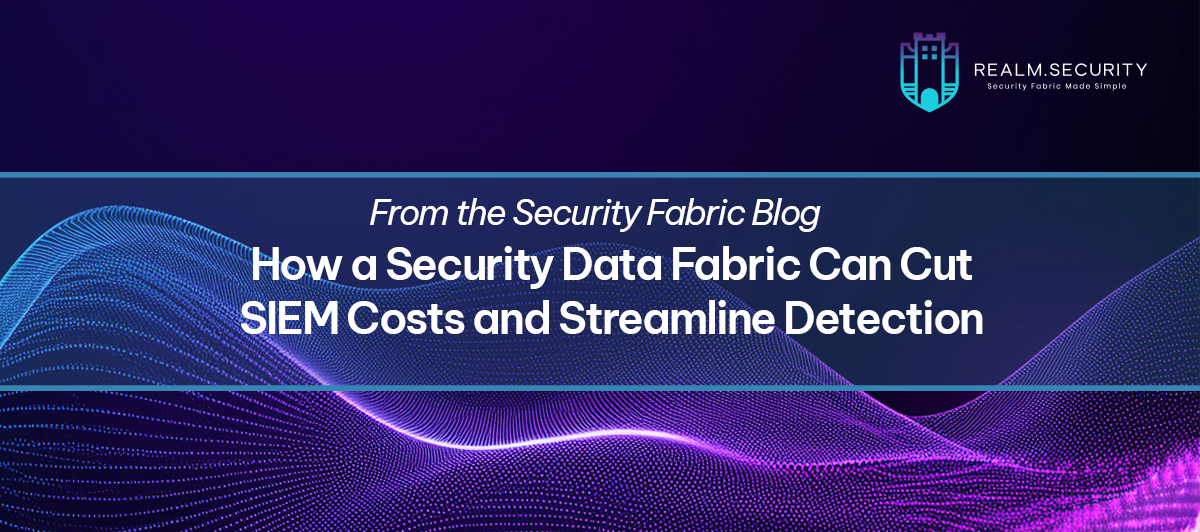Security leaders today are under pressure from all sides. As organizations adopt more cloud services, endpoint agents, and third-party tools, the volume and complexity of security data have exploded, often faster than teams can keep up. A modern Security Operations Center (SOC) might be pulling telemetry from dozens of sources, including EDRs, firewalls, identity platforms, SaaS applications, and cloud infrastructure. Each of these tools creates data in its own format, with varying levels of fidelity and relevance.
The result? Security teams are inundated with noise. Recent industry research shows that the average enterprise SOC now fields over 4,000 alerts per day, with some reporting upward of 100,000 daily alerts depending on scale and maturity. Worse still, over 67% of alerts are never investigated, simply because analysts are overwhelmed. This volume isn't tapering off, either—many organizations have seen alert traffic increase 300–500% over the last two years, flooding detection pipelines and exhausting human resources.
At the same time, the cost of managing this deluge is spiraling out of control. SIEM and XDR platforms, often priced by daily data ingestion, are struggling to keep up. Enterprises generating 1–10 TB of logs daily can easily spend millions of dollars each year on ingestion and storage. Even moderate-sized deployments, at 100 GB/day, can run $150,000 per year in licensing fees alone. As log volume growth averages 50%+ year over year, security leaders are being forced to rethink how they collect, store, and route their data to avoid budget overruns and operational bottlenecks.
For many teams, it's a losing battle. Detection engineers are spending more time tuning pipelines and reducing false positives than proactively hunting threats. Storage strategies are becoming fragmented—part SIEM, part cloud archive, part MDR feed. And migrating from one platform to another only adds complexity, often requiring months of manual work.
These are no longer just technical growing pains. They’re operational risks. When your security data is fragmented, duplicative, and costly to manage, it affects everything from detection and response to compliance and executive reporting.
That’s why forward-thinking security teams are adopting a new architectural approach: the security data fabric.
How a Security Data Fabric Solves Today’s Operational Challenges
Security teams don’t need another generic data pipeline. They need a way to bring structure to the chaos, without rewriting every integration or building a metadata empire from scratch.
That’s what a security data fabric is designed to do.
While firms like Gartner describe data fabric as an architectural approach to unify and automate data delivery through metadata and AI, most security leaders know the reality: they’re already drowning in data, and they can’t afford to wait 18 months for a theoretical metadata model to pay off.
Realm’s perspective is different. We believe a security data fabric should help your team act faster today, not just plan better tomorrow.
A purpose-built security data fabric delivers:
Instead of letting your tools dictate how your data flows, a security data fabric gives you centralized, intelligent control over what data moves where, how it's shaped, and what context it carries.
Why Security Leaders Are Making the Shift
A security data fabric isn’t just about convenience; it’s about operational and financial survival. The benefits extend well beyond the SOC:
How Realm.Security Makes the Security Data Fabric Work—for You
At Realm.Security, we’ve walked in your shoes. We built Realm because we were tired of bloated SIEM bills, brittle log pipelines, and complex “data platforms” that required a team of engineers just to operate.
Realm isn’t another general-purpose observability tool. It’s a security data fabric designed from the ground up for lean, modern security teams—especially those that can’t afford to spend months building and maintaining custom integrations.
With Realm, your team can:
Realm delivers centralized visibility, intelligent routing, and cost control—without the complexity. Whether you're scaling fast or consolidating tools, we give you the foundation to act faster, spend smarter, and stay in control of your data.
Up Next: How to Build a Security Data Fabric That Delivers
Now that you understand the why, the next step is execution. In the next post, we’ll walk through a practical framework for building your security data fabric—from identifying the right data sources and destinations to aligning stakeholders, defining success metrics, and getting quick wins without months of prep.
Ready to Take Control of Your Security Data?
If your team is struggling with overwhelming alert volumes, rising SIEM costs, or tangled integrations, you're not alone—and you’re not stuck. A security data fabric can provide you with the control, clarity, and flexibility your operations require.
See how Realm.Security can help you streamline your security data strategy without the complexity. Schedule a demo today!

